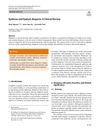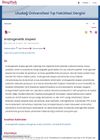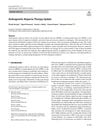How to tell if it’s miniaturizing vs regrowth? Is this regrowth? 7/28/2025
The conversation discusses hair regrowth and miniaturization, with the user transitioning to oral dutasteride and oral minoxidil, and occasionally using topical minoxidil. The user observes baby hairs near the hairline but less on the scalp, indicating possible regrowth and shedding.
View this post in the Community →
Similar Community Posts Join
5 / 806 resultscommunity No regrowth after oral min, topical fin, min, and tret: Aggressive diffuse/hairline recession in 2 years
A user experienced no hair regrowth after using oral minoxidil, topical finasteride, minoxidil, and tretinoin, and reported side effects from oral finasteride. They are considering switching to dutasteride or using hair fibers for better results.
community 0.5mg Dutasteride promotes more “regrowth” than 5mg oral Minoxidil
Dutasteride promotes more hair regrowth than Minoxidil. Users discuss combining treatments for better results and share personal experiences with side effects.
community Meta analysis of minoxidil only vs 5AR inhibitors
Oral dutasteride is the most effective for hair regrowth, followed by oral finasteride and minoxidil. Topical finasteride combined with minoxidil is recommended for those avoiding systemic DHT reduction.
community NW6 - 12 months progress - Dut/Oral Min/2% Keto Shampoo
User shared 12-month hair loss progress using oral minoxidil, oral dutasteride, and 2% ketoconazole shampoo. They detailed their medication regimen and dosages.
community Comparison of options: topical vs medication
A user diagnosed with AGA is seeking advice on hair loss treatments, comparing topical Minoxidil, Spironolactone, and Finasteride to oral medications and natural methods like dermastamping, PRP, and LED light. They are concerned about side effects and effectiveness, especially given their existing fatigue.
Related Research
6 / 1000+ results
research Evidence-Based Guideline for the Treatment of Androgenetic Alopecia in Women and Men – Short Version
Use minoxidil for hair loss treatment; assess results after 6 months.

research Eyebrow and Eyelash Alopecia: A Clinical Review
The review shows how to properly diagnose and treat the loss of eyebrow and eyelash hair.

research Androgenetic Alopecia: A Review and Emerging Treatments
Hair loss, known as Androgenetic Alopecia, is often caused by hormones and can be diagnosed using noninvasive techniques. Treatments include topical minoxidil and oral finasteride, with new treatments being explored. There may also be a link between this type of hair loss and heart disease risk.

research Androgenetic Alopecia
The review provided information on various treatments to stop hair thinning and increase hair density in people with common genetic hair loss.

research Relative Efficacy of Minoxidil and the 5-Alpha Reductase Inhibitors in Androgenetic Alopecia Treatment of Male Patients
Dutasteride is the most effective hair loss treatment after 24 weeks, but finasteride leads to the most hair growth after 48 weeks.

research Androgenetic Alopecia: Therapy Update
There are many treatments for common hair loss, but more trials are needed to decide which are best.